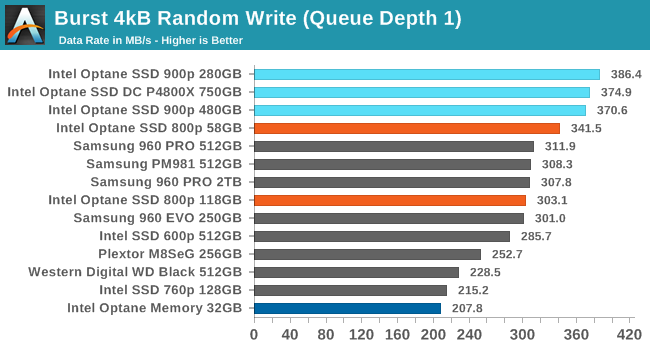- Mar 10, 2004
- 28,520
- 1,575
- 126
Looks like 3D Xpoint may be failing to get any traction...
https://www.tomshardware.com/news/intel-micron-3d-xpoint-imft,37461.html
https://www.tomshardware.com/news/intel-micron-3d-xpoint-imft,37461.html
I think that is much more telling, along with the fact that the changes to their deal include NAND. They want to make and sell their own, and probably without Intel's margins.(...) thus incurring under-utilization charges that impacted Micron's bottom line
Intel wants to confusedly market the product, price the product high,
That makes sense because the consumer market is pretty cutthroat! It was difficult enough to convince other users to upgrade to SATA SSDs when theyre comparing 120-480GB for more in cost than 1TB-2TB and comparing benchmarks with Xpoint is almost always demoralizing until you use one as its greatest strength is in low queue depths where the majority of workloads take place.I think Intel just want to make server oriented products mainly and micron wants to sell serverproducts and customer products.
Maybe Intel and Micron even have a deal that Micron is not allowed to produce dimms similar in technology that are compatible with the new xeons that support 3dxpoint.
With 3dxpoint, i am sure Intel has oncpu memory encryption/decryption as well like AMD EPYC does. Otherwise, someone could just shut down the server, exchange the 3dxpoint module and have all data to be examined while relaxed at home. Of course, restarting the server before leaving.
If the costs really are in that ballpark, the retail market doesn't seem like the place to be, period, and sticking mainly to workstation and server markets makes more sense. It's hard to deny the random performance, but it's just not that much better than regular SSDs for most of us, as regular SSDs are plenty fast enough for most of us, and Optane as an old SRT cache replacement has such limited appeal, these days.An analyst tweeted saying the costs of making 3D XPoint may mean even the very high $/GB Optane like the 800P may not be making any money for them. Something like $2-2.5/GB.
You could say the server P4800X part is subsidizing the consumer parts.


That's only ~10k writes, though, at 1x (also, I couldn't find any official write cycle ratings), which would be in the ballpark of commodity MLC as wear leveling became necessary. But, they might just be treating them cautiously, since predicted lifetimes aren't always 100% accurate, and it's fairly new tech.I don't think elaborate wear levelling is necessary on the NVMe parts.
The 16/32GB Optane Memory has 185TBW rating, which is similar to the endurance ratings 256GB driver from the top vendors like 960/970 from Samsung, 760 from Intel.

That's only ~10k writes, though, at 1x (also, I couldn't find any official write cycle ratings), which would be in the ballpark of commodity MLC as wear leveling became necessary.
Sigh, and 3D Xpoint had such promise. I think that the technology might have taken off had Intel just made SSDs with it instead trying to get everyone to use DIMMs.
On paper, the high I/O performance would allow SSD vendors to make low-capacity SSDs with limited NAND channels without today's performance penalty, offsetting the low parallelism with high transfer rates.


